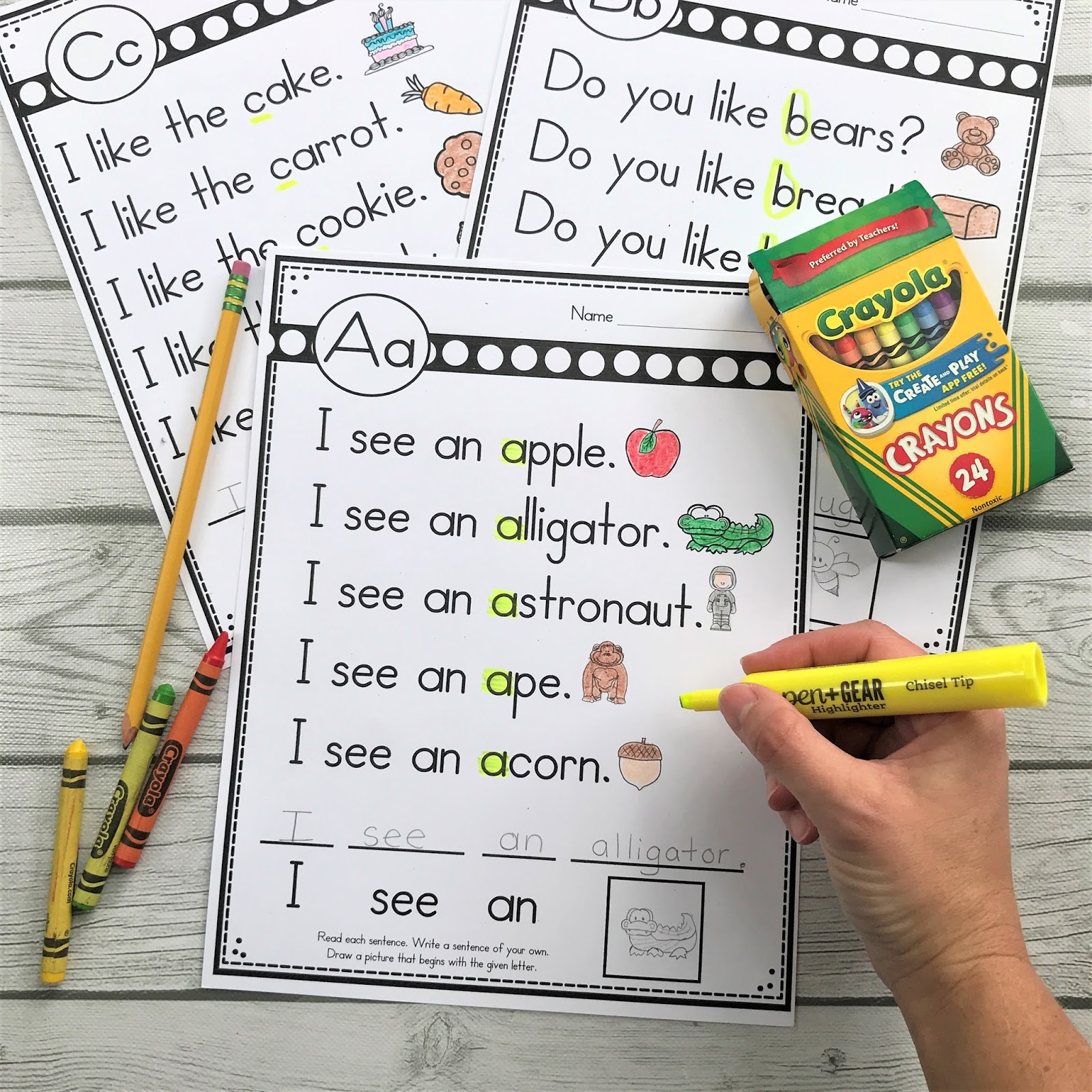If you use poetry in your classroom, you know exactly how difficult it can be to find poems that are simple enough for kindergarten students. It can be almost impossible! This was a struggle a few years ago in my kindergarten classroom, and because of this struggle I decided to create
a set of sight word poems that I knew my young readers could master. The poems were short, predictable, and full of SIGHT WORDS which is exactly what they needed. Since that time, my poetry library has really grown and I have written poems for just about every holiday and season. Most teachers who use my poems, align the poems with their sight word curriculum. I have gotten such good feedback from other early childhood teachers who also use my poems. Here are some ideas on how these poems can be used in an early childhood classroom.
Number 1 (Poetry Notebook)
Give your students
a new poem each week. Have your kiddos highlight the sight word (or words) that you are practicing. The students can color the pictures, and then add the poem to their poetry notebooks. I used plastic sleeves for this poetry notebook. This makes the poems easy to add to the notebook, and possibly change the order of the poems later. The students can place the notebooks in their book boxes and pull them out for a familiar read. These notebooks are perfect for guided reading or Read to Self time!
Number 2 (Use Chart Paper)
Write the sight word poems on chart paper and let the kids help you find and highlight the sight words whole group. The kids love to come up and use the highlighter in front of the class. You can also practice finding rhyming words, tracking print, looking at the picture cues, and more. When you have completed the poem, it is already on chart paper so HANG IT UP and keep it as a visual display for your students to use.
Number 3 (Missing Sight Words)
Write the poem on chart paper with the sight word (or sight words) that you are practicing MISSING this time. The kids can help you write in the missing words. They love to "share the pen" with the teacher. This makes another great display for the kiddos to use as a reference. You can also pull out all of the poems that you have created weekly, and use them as a whole group familiar read. This is a perfect way to keep the sight words fresh in their minds because young kids learn by repetition.
Number 4 (Illustrate the Poem)
Let your kids illustrate the sight word poem after you have finished practicing it together. This is a great way for them to make text connections! Most kids love to draw, so this will most certainly keep them engaged.
Number 5 (Plastic Sleeves and Expo Markers)
Place the poem in a plastic sleeve and let your kiddos practice finding sight words, letters, and rhyming words as you call them out. They can circle them with their expo marker and then erase to use again. The students can work in pairs and make a game out of it. They can ask each other to find certain sight words. Simple and effective!
Number 6 (White Boards)
Let the students circle sight words that you call out and then write them on a white board. These poems are so simple that students can also copy the sight word poem on their white board.
Number 7 (Writing)
Use the sight word poems as a topic for writing. After learning to read the poem whole group, start a writing anchor chart that is relatable to the poem. This poem "I Like The Ocean" can be used to create an anchor chart about things students like about the ocean. Ask the students what they like about the ocean. Write their answers as predictable "I like the" sentences about the ocean on chart paper. This will help the kids make connections about what they are reading, and use those connections in their writing. Display the chart so that they can write their own "I like the" sentences in their journal.

Use a pocket chart to sequence the poem. I created
this set of pocket chart poems to match the sight word poem notebook. You can let the students help you order the poem! They will love interacting and using the pocket chart. I found this "highlighting plastic" and cut it into strips to fit the sight words that we are learning. The kids can help you highlight the sight words in the poem while using the pocket chart. You can mix the poem up and let the kids help you order it. You can also show the poem with words missing, and let the students figure out which words are gone.
Number 9 (Ordering the Poem)
Cut the poem into strips and place the strips in a plastic bag or envelope. Let the kids order the poem and glue it on construction paper. These could be bound to create a sight word book. Simple!
Grab this pin to come back!-Crystal


























































